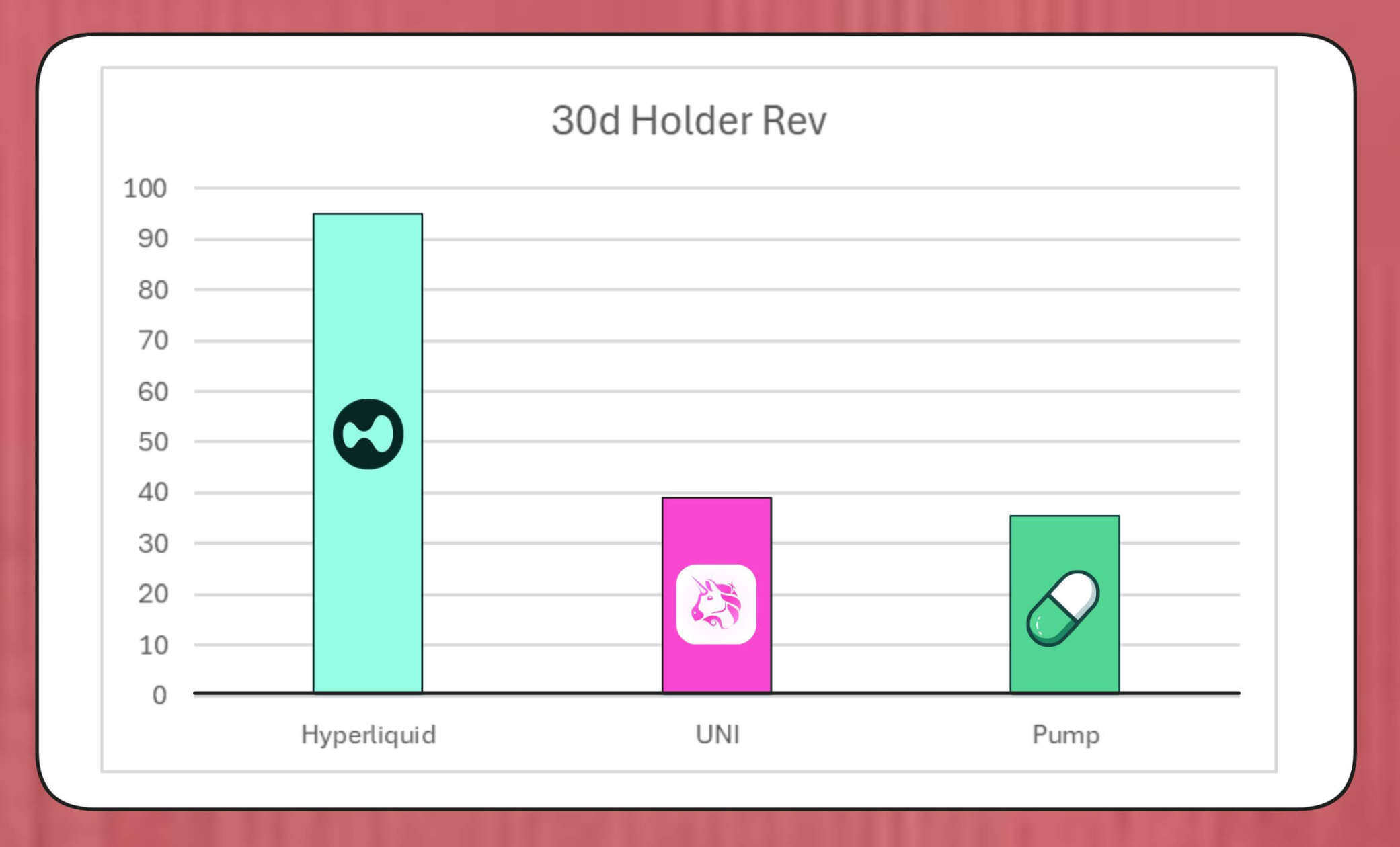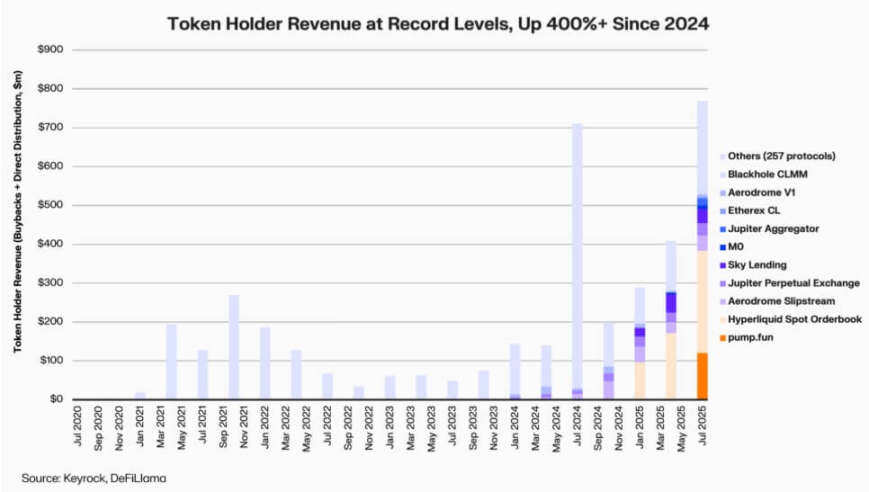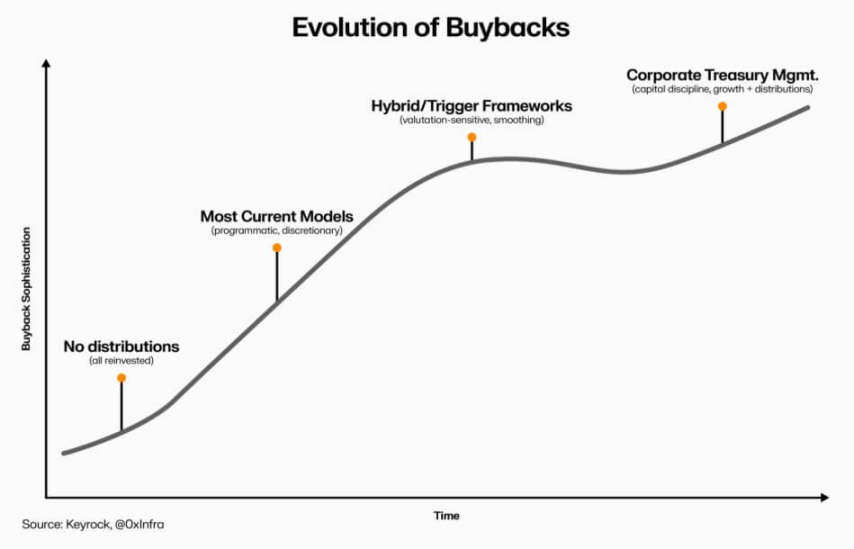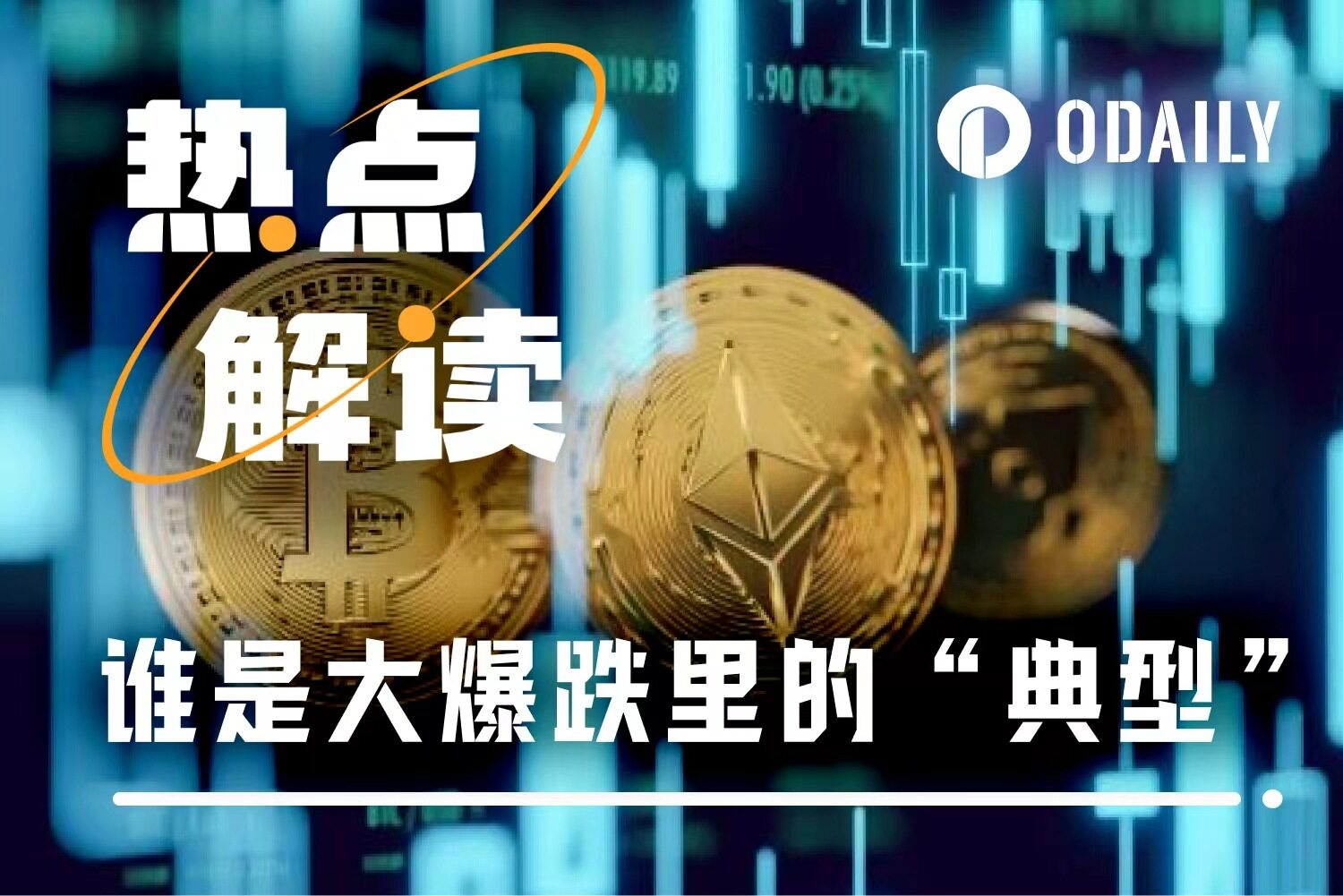The Crossroads of DeFi 2.0: When Buyback Waves Collide with "Centralization" Criticism
Original author: Oluwapelumi Adejumo
Original translation by: Saoirse, Foresight News
On November 10, when Uniswap administrators submitted the "UNIFication" proposal, the document read more like a corporate restructuring than an agreement update.
The proposal plans to activate previously unused protocol fees, channeling funds through a new on-chain treasury engine and using the proceeds to purchase and burn UNI tokens. This model is strikingly similar to stock buyback programs in traditional finance.
A day later, Lido launched a similar mechanism. Its Decentralized Autonomous Organization (DAO) proposed an automatic buyback system: when the price of Ethereum exceeds $3,000 and the annualized revenue exceeds $40 million, the excess staking proceeds will be used to buy back its governance token, LDO.
This mechanism deliberately employs a "counter-cyclical" strategy—it is more powerful during bull markets and becomes more conservative when market conditions tighten.
These initiatives collectively mark a major transformation in the DeFi space.
For the past few years, the DeFi space has been dominated by "meme tokens" and incentive-driven liquidity activities; now, leading DeFi protocols are repositioning themselves around core market fundamentals such as "revenue, fee capture, and capital efficiency".
However, this shift has also forced the industry to confront a series of thorny issues: control ownership, how to ensure sustainability, and whether "decentralization" is gradually giving way to corporate logic.
The New Financial Logic of DeFi
For most of 2024, DeFi's growth relied primarily on cultural buzz, incentive programs, and liquidity mining. Recent moves such as "reactivating fees" and "implementing buyback frameworks" indicate that the industry is attempting to more directly link token value to business performance.
Take Uniswap as an example. Its plan to burn up to 100 million UNI tokens redefines UNI from a pure "governance asset" to an asset that is closer to a "protocol economic rights certificate"—even though it lacks the legal protection or cash flow distribution rights of equity.
The scale of such buyback programs should not be underestimated. MegaETH Labs researcher BREAD estimates that, based on current fee levels, Uniswap could generate approximately $38 million in buyback capacity per month.
This amount will exceed Pump.fun's buyback rate, but fall short of Hyperliquid's monthly buyback volume of approximately $95 million.

A comparison of token buybacks for Hyperliquid, Uniswap, and Pump.fun (Source: Bread)
Lido's simulated mechanism structure shows that it can support a buyback scale of approximately $10 million annually; the repurchased LDO tokens will be paired with wstETH and put into liquidity pools to improve trading depth.
Other protocols are also accelerating similar initiatives: Jupiter is allocating 50% of its operating revenue to JUP token buybacks; dYdX is allocating a quarter of its network fees to buybacks and validator incentives; and Aave is also developing a concrete plan to invest up to $50 million annually through its treasury to drive buybacks.
Keyrock data shows that since 2024, income-linked token holder dividends have increased more than fivefold. In July 2025 alone, protocols spent or distributed approximately $800 million on buybacks and incentives.

DeFi protocol holder income (Source: Keyrock)
As a result, about 64% of the revenue from leading protocols will now flow back to token holders—a stark contrast to the previous cycle of "prioritizing reinvestment and then distributing."
Behind this trend is a new consensus emerging in the industry: "scarcity" and "recurring income" are becoming the core of the DeFi value narrative.
Institutionalization of the token economy
The buyback wave reflects the deepening integration of DeFi and institutional finance.
DeFi protocols are starting to use traditional financial metrics such as price-to-earnings ratio, yield threshold, and net distribution rate to convey value to investors—who are also evaluating DeFi projects in the same way they would evaluate growth companies.
This convergence provides fund managers with a common analytical language, but it also brings new challenges: DeFi was not designed with institutional requirements such as "discipline" and "information disclosure" in mind, but now the industry needs to meet these expectations.
It is worth noting that Keyrock's analysis has pointed out that many buyback programs rely heavily on existing treasury reserves rather than sustained recurring cash flows.
This model may support token prices in the short term, but its long-term sustainability is questionable—especially in a market environment where "fee revenue is cyclical and often linked to token price increases."
Furthermore, Blockworks analyst Marc Ajoon believes that "autonomous buybacks" typically have limited impact on the market and may lead to unrealized losses for the protocol when token prices fall.
In light of this, Ajoon advocates for the establishment of a "data-driven automatic adjustment system": allocating funds when valuations are low and reinvesting when growth indicators are weak, ensuring that buybacks reflect true operating performance rather than speculative pressure.
He stated:
"As things stand, buybacks are not a panacea... Due to the existence of the 'buyback narrative,' the industry blindly places it on other paths that may bring higher returns."
Arca's Chief Investment Officer, Jeff Dorman, offers a more comprehensive perspective.
He believes that corporate buybacks reduce the number of shares in circulation, but the tokens exist in a special network—whose supply cannot be offset by traditional restructuring or mergers and acquisitions.
Therefore, burning tokens can drive the protocol towards a "fully distributed system"; but holding tokens also allows for future flexibility—they can be increased at any time if demand or growth strategies require it. This duality makes capital allocation decisions in DeFi more influential than those in the stock market.
New risks emerge
While the financial logic of buybacks is simple and straightforward, their impact on governance is complex and far-reaching.
Take Uniswap as an example. Its "UNIndication" proposal plans to transfer operational control from the community foundation to the private entity Uniswap Labs. This centralization trend has raised concerns among analysts, who believe it could replicate the "hierarchical structure that decentralized governance should avoid."
In response, DeFi researcher Ignas pointed out:
"The original vision of 'decentralization' in cryptocurrencies is facing significant challenges."
Ignas emphasizes that this "centralization tendency" has gradually emerged over the past few years—the most typical example being that DeFi protocols often rely on "emergency shutdowns" or "accelerated decision-making by the core team" when dealing with security issues.
In his view, the core of the problem is that even if "centralized power" has economic justification, it will damage transparency and user participation.
However, supporters argue that this concentration of power may be a "functional need" rather than an "ideological choice."
Eddy Lazzarin, CTO of venture capital firm a16z, describes Uniswap's "UNIFication" model as a "closed-loop model"—in which revenue generated by decentralized infrastructure flows directly to token holders.
He added that the DAO will retain the right to "issue more tokens for future growth," thus striking a balance between flexibility and financial discipline.
The tension between "distributed governance" and "execution-level decision-making" is not a new issue, but its financial impact has now expanded significantly.
Currently, leading protocols manage treasuries worth hundreds of millions of dollars, and their strategic decisions can significantly impact the entire liquidity ecosystem. Therefore, as the DeFi economy matures, the focus of governance discussions is shifting from the "decentralization philosophy" to the "actual impact on balance sheets."
The test of DeFi's maturity
The token buyback wave indicates that decentralized finance is evolving from a "free experimentation phase" into a "structured, indicator-driven industry." The "free exploration" that once defined this field is gradually being replaced by "cash flow transparency," "performance accountability," and "alignment of investor interests."
However, maturity also brings new risks:
- Governance may shift towards "central control";
- Regulators may consider share buybacks as "actual dividends," sparking compliance controversy.
- The team may shift its focus from "technological innovation" to "financial engineering," neglecting the development of its core business.
The sustainability of this transformation depends on the choices made at the implementation level:
- The "programmatic buyback model" can retain its decentralized characteristics by automatically injecting transparency on-chain;
- While the "self-repurchase framework" can be implemented more quickly, it may weaken credibility and legal clarity.
- A "hybrid system" (linking buybacks to measurable and verifiable network metrics) may be a compromise, but there are few cases that have proven its "resilience" in the actual market.

The Evolution of DeFi Token Buybacks (Source: Keyrock)
But one thing is clear: the interaction between DeFi and traditional finance has gone beyond "simple imitation". Today, while retaining its "open source foundation", the field is incorporating corporate management principles such as "treasury management", "capital allocation" and "balance sheet prudence".
Token buybacks are a prime example of this integration—they combine market behavior with economic logic, driving DeFi protocols to become "self-funded, revenue-driven organizations": accountable to the community and measured by "performance" rather than "ideology."
- 核心观点:DeFi协议转向回购机制重塑价值逻辑。
- 关键要素:
- Uniswap拟销毁1亿UNI代币。
- Lido设自动回购系统。
- 头部协议64%收入回馈持有者。
- 市场影响:推动代币价值与业务表现挂钩。
- 时效性标注:中期影响。



